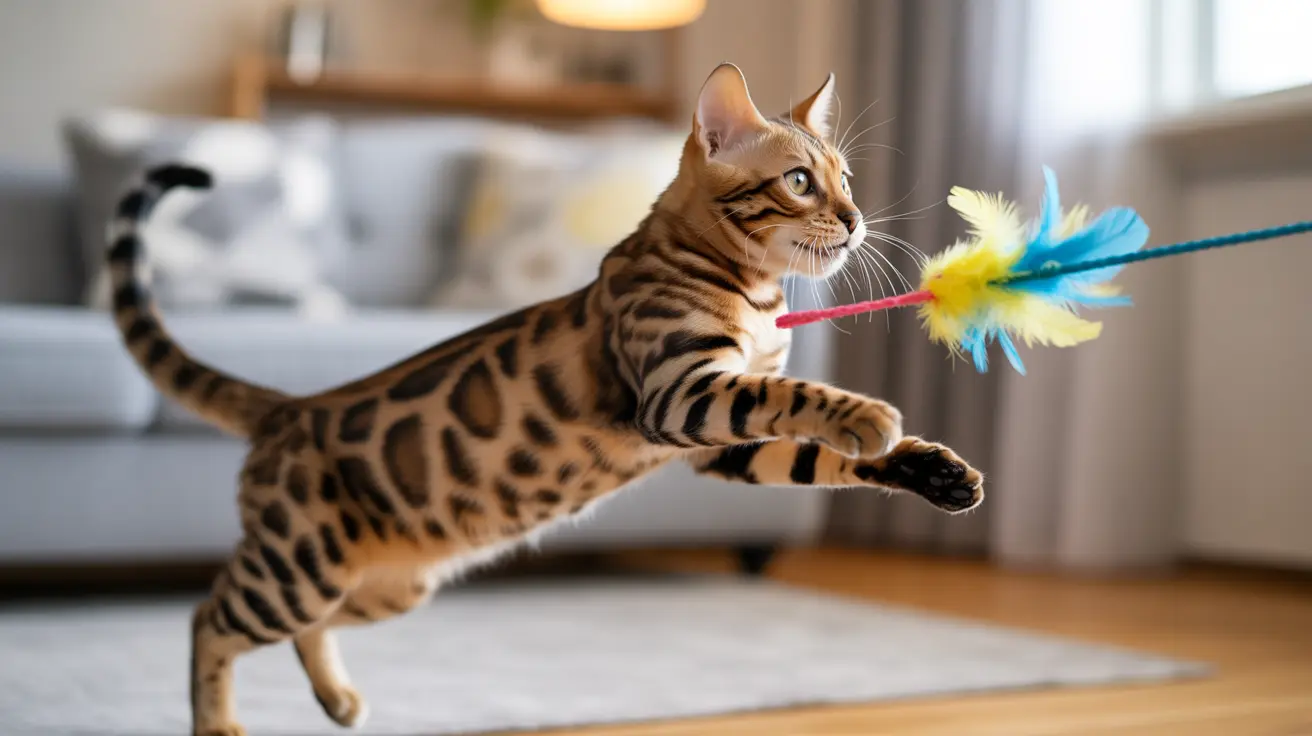Cat pouncing is one of the most fascinating and instinctive behaviors our feline friends display. This natural action, deeply rooted in their wild ancestry, serves multiple purposes from hunting and play to social interaction. Whether you've watched your kitten practice their hunting skills or been surprised by your adult cat's playful ambush, understanding this behavior is crucial for every cat owner.
In this comprehensive guide, we'll explore the science behind cat pouncing, its developmental stages, and how this behavior manifests throughout your cat's life. We'll also provide practical advice for channeling this natural instinct positively while preventing unwanted pouncing behaviors.
The Science Behind Cat Pouncing
Pouncing behavior is hardwired into every cat's DNA, a testament to their evolutionary history as skilled predators. Even well-fed house cats retain this instinct, which begins developing as early as five weeks of age. During this crucial period, kittens start perfecting their coordination and hunting skills through play and practice.
Research shows that this behavior is more than just play – it's a complex combination of motor skills, depth perception, and timing that cats must master for survival in the wild. For domestic cats, these skills translate into play and exercise, helping maintain both physical and mental health.
Developmental Stages of Pouncing Behavior
Kittens go through several distinct stages in developing their pouncing abilities:
- Weeks 2-7: Early coordination development and social play begins
- Weeks 7-14: Peak play period with frequent pouncing practice
- Months 3-6: Refinement of hunting skills through active play
- Months 6-18: Integration of pouncing into adult behavioral patterns
The Purpose Behind the Pounce
Cats pounce for various reasons, each serving a specific function in their behavioral repertoire:
Hunting Practice
Even when well-fed, cats maintain their hunting instincts through pouncing. This behavior helps them stay sharp and ready for potential hunting opportunities.
Social Bonding
Pouncing plays a crucial role in social development, particularly among littermates and in cat-human relationships.
Stress Relief
Some cats use pouncing as a way to release energy or cope with anxiety, making it an important emotional outlet.
Creating a Pounce-Friendly Environment
To support healthy pouncing behavior, consider these environmental enrichment strategies:
- Provide vertical spaces for ambush opportunities
- Rotate interactive toys to maintain interest
- Create hiding spots that allow stalking and pouncing
- Set up scheduled play sessions using wand toys
Managing Unwanted Pouncing
While pouncing is natural, sometimes it needs to be redirected. Here are effective management techniques:
- Never use hands or feet as play objects
- Provide appropriate toys for pouncing practice
- Establish consistent play routines
- Use positive reinforcement to encourage appropriate play
Frequently Asked Questions
Why do cats instinctively pounce and how does this behavior develop in kittens?
Cats instinctively pounce as part of their predatory nature, with this behavior developing as early as five weeks of age. Kittens learn through play and practice, refining their coordination and hunting skills during the crucial socialization period of 2-7 weeks.
How can I encourage healthy pouncing play without encouraging aggression in my cat?
Use appropriate toys like wand toys and small plush animals, never your hands or feet. Establish regular play sessions and provide environmental enrichment that allows natural stalking and pouncing behaviors.
What are common reasons a cat might pounce on people and how should I respond?
Cats may pounce on people for attention, play, or out of redirected aggression. Respond by redirecting the behavior to appropriate toys and maintaining consistent boundaries during play.
When should I be concerned that my cat's pouncing is excessive or related to anxiety?
Be concerned if pouncing becomes aggressive, occurs suddenly and frequently, or is accompanied by other behavioral changes. These could indicate stress, anxiety, or medical issues requiring veterinary attention.
What types of toys and enrichment best satisfy a cat's natural urge to stalk and pounce?
Interactive wand toys, small moving toys, puzzle feeders, and environmental enrichment like cat trees and hiding spots best satisfy natural pouncing instincts. Rotate toys regularly to maintain interest and engagement.
Conclusion
Understanding and properly managing your cat's pouncing behavior is essential for maintaining a happy, healthy relationship with your feline companion. By providing appropriate outlets for this natural instinct and responding correctly to unwanted pouncing, you can help your cat thrive while preserving the special bond you share.






